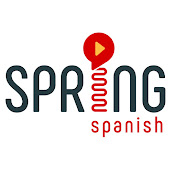Pragmatic failure in Spanish
Common Mistakes when Making Requests in Spanish
PRACTICAL IDEAS & RESOURCES
Resources in this section curated by: Anne Walkup, Isabella Walters

Don't Say "Me Gustaría" [10 Better Alternatives in Spanish] | Blog Post + Video
"Me gustaría" is commonly misused by L2 Spanish speakers in a service setting. This post points out that it is too formal for a restaurant or service encounter. Some alternatives to this phrase are "me da" (give me), "me trae" (bring me), and even "lo molesto con" (can I bother you for). The latter is used primarily in Mexican dialects of Spanish.

PUEDO TENER is WRONG! Here's How to Ask for Things in Spanish | YouTube Video
This YouTuber explains that "puedo tener" does not translate to "can I have" and should therefore not be used to order food in a restaurant. She alternatively suggests phrases like "para mí," "me podrías traer," "me podrías dar," "me das," etc. She uses the informal conjugation in all of these and suggests that Spanish learners memorize some of them so they don't have to think about conjugations while ordering food.

How to Order Food in Spanish | YouTube Video
YouTuber Maria acts out an interaction between a Spanish-speaking server and a Spanish learner. The Spanish learner does not understand anything that is being asked, so she says "si" to everything. In the discussion afterwards, Maria suggests that "no entiendo" is a more appropriate response that avoids further miscommunication from occurring. It can be daunting to speak a second language in a public setting, but simply agreeing to everything hurts more than helps.

Ordering coffee in Spain | TikTok
When ordering drinks in Spanish, it's important to know what to call them. Even if you know how to ask for a drink, you won't have much success unless you can name the drink that you want. This TikTok video names many types of coffee and also points out that "lattes" are not called that in many Spanish-speaking countries, including Spain. Learners often make the mistake of ordering a latte or something else in coffee shops that does not exist under that name.

Learn Spanish: Common Mistakes In Ordering Food In Spanish | Webpage
This article explains common mistakes speakers make whose first language (L1) is English when ordering at a restaurant. Although the same request structures exist in both Spanish and English, the pragmatic meaning doesn't translate. Included are three phrases that should not be directly translated from English in a request-making situation, as well as alternatives that are more pragmatically appropriate.

How To Make Requests In Spanish And Alternative Ways To Give Commands | Blog Post
L1 English speakers sometimes form requests using the future tense, i.e.: "Will you shut up?" This structure does not hold the same meaning in Spanish. This article offers three alternative ways to say this that makes sense in Spanish.
ACADEMIC RESOURCES ON HUMOR IN SPANISH
Resources in this section curated by: Carla Consolini, Tigre Lusardi, Lorelei Pfeffer, Johanna Lyon, Cathy Lee, Tung Tuaynak, Jermayne Tuckta, and Ken Ezaki Ronquillo
Cordelia, M. (1996). Confrontational style in Spanish arguments: Pragmatics and teaching outlook. Language, Culture and Curriculum, 9(2), 148-162. https://doi.org/10.1080/07908319609525226
In this study the author sought to determine if second language learners of Spanish who speak the language in heritage or Spanish-dominant locations debate any differently than those who speak Spanish only in a classroom setting. A group of students learning Spanish at an Australian university were split into three groups (G1- students from Spanish-speaking backgrounds, G2 - students who had lived for a year in a Spanish-speaking country, and G3- students whose only exposure to Spanish was in a language learning classroom) to assess any possible differences in argumentative style between the groups. Each group was recorded individually while talking/debating about the same topic. Upon analysis of the recordings, the G1 and G2 groups, who both had exposure to Spanish outside of the classroom setting, employed similar confrontational style, including interruption, cooperative overlap during turn taking, and rapidly-timed stressed challenge questions. The G3 group employed a more non-confrontational style typical to Australian English, omitting Spanish style interruption, cooperative overlap and challenge questions and following an English style orderly turn-taking strategy.
The G1 and G2 groups had likely learned the confrontational style through speaking with native speakers encountered in their communities of families (G1) or during the study abroad experience (G2). Learners without the ability to interact regularly (and socially) with native Spanish speakers will thus need explicit instruction in Spanish confrontational style to be able to employ it successfully. The author concludes that, in a classroom of speakers from a variety of backgrounds, open debates can be useful activities for exposing learners to different types of pragmatic strategies in the target language.
Hidalgo-Downing, L., Hidalgo-Downing, R., & Downing, A. (2014). Strategies of (in)directness in Spanish speakers’ production of complaints and disagreements in English and Spanish, in A. Gomez Gonzalez, F. Mendoza Ibanes, F. Gonzalvez-Garcia, and A. Downing (Eds.), The Functional Perspective on Language and Discourse: Applications and implications. 261-284.
This study is a research into how students from a Spanish university use strategies on being indirect when expressing complaints, disapproval and disagreements, both in English and Spanish, through the use of role play. Results show that different strategies were used when speaking Spanish or English, showing that learners adapt their strategies depending on their understanding of the culture (English vs Spanish) they were participating in.
Pomerantz, A., & Bell, N. D. (2011). Humor as a Safe House in the Foreign Language Classroom. The Modern Language Journal, 95, 148-161. https://doi.org/10.1111/j.1540-4781.2011.01274.x
In this article, Pomerantz and Bell observe a foreign language Spanish class at a private university where all students were at the intermediate-high level. The aim of the study was to see how humor was employed and the impact it had on language learning. Pomerantz and Bell observed and took notes on a 15-week course that met three times a week for 50 minutes each, and interviewed the fifteen students in the course as well as the teacher. Audio recordings were also used to compile data. They found that humor allowed students to saturate language with their own meanings beyond typical, repetitive activities the teacher was having them do.
Shively, R. L. (2013). Learning to be funny in Spanish during study abroad: L2 humor development. The Modern Language Journal, 97(4), 930-946. https://doi.org/10.1111/j.1540-4781.2013.12043.x
In this case study, the author used a language socialization lens to examine how a 21-year old second language (L2) Spanish speaker developed use of humor in Spanish while studying in Spain. Seven recordings of naturalistic conversations were made of this student speaking with his host family and with a fellow L2 learner from his university classes. The recordings were taken over the course of the semester the student spent in Spain. The author coded successful and failed attempts at humor for genre, function, mechanism, contextualization and topic. The student made 72 successful humorous utterances and 18 failed ones, and 78% of his humorous utterances occurred during conversations with his friend. Over the period of the semester, the student was able to produce more successful humorous utterances, and was able to employ a higher linguistic creativity in his attempts at humor.
Results point to the importance of L2 speakers being able to interact and develop friendships with L1 speakers in order to better understand how to successfully use the pragmatic tools needed to produce humor in the target language.
Shively, R. L., Menke, M. R., & Manzón-Omundson, S. M. (2008). Perception of irony by L2 learners of Spanish. Issues in Applied Linguistics, 16(2). https://doi.org/10.5070/L4162005096
This study aims to look at how L2 learners of Spanish at three different levels of proficiency are able to interpret irony in Spanish. The participants were L1 speakers of English attending a public American university; they were in their second, fourth or sixth semester of Spanish study. The students’ interpretation of irony was tested through a written task or a video-enhanced task that used selected scenes from films in three different Spanish dialects as source material.
Analysis of the responses to both tasks showed that the accurate interpretation of irony generally rose as length of time of study increased. Lexical knowledge was key to the students’ ability to interpret ironic statements, as they were not able to correctly interpret statements if they did not know/understand key lexical terms within those statements. In looking at written versus video-enhanced presentation, the authors found that only the highest proficiency, sixth semester students showed a significant difference in the ability to understand irony in the video-enhanced task over the written one. The authors suggest that constraints on the capacity of working memory for the second and fourth semester groups might mean that interpreting irony in the video-enhanced task (a video clip in addition to written information) was challenging precisely because it involved two different kinds of input.
Shively, R. (2013). Learning to be funny in Spanish during study abroad: L2 humor development. Modern Language Journal, 97(4), 930-946.
This study used a socialization framework to look at the development of humor in Spanish for American students that went to Spain to study for a semester. To be able to comprehend and produce humor it is necessary to have a good foundation of linguistic, pragmatic, sociolinguistic, and cultural knowledge. The students need to understand why and how an utterance is funny. The study abroad students were put together with people with higher proficiencies with the language in order to be exposed to the input of humor in Spanish. The students lived with host families in Spain and there were also students from Puerto Rico that the students interacted with. The data collection was both quantitative and qualitative. Entire conversations with the host family and one Puerto Rican friend were recorded and analyzed. Some of the results were that the American student had some failed humor due to trying to translate his humor from English to Spanish. The student was able to get more explicit feedback from the Puerto Rican friend than the host family. The interactions with the other students improved when using humor, but had a limited amount of humor usage with the host family.
The implication for this study is that the students need to have more access to forming relationships with the locals when doing study abroad. But the implication for our collection is that there needs to be more explicit feedback on the usage of humor pragmatics, because humor norms are different in every language and context they are used in. Students shouldn’t need to travel to a different country to start getting explicit feedback on the pragmatics of language. It can be done by the language instructor back at home. With a background of pragmatic knowledge before traveling to another country will make it easier to learn how to interact with the locals from the get go.
Yus, F. (nd). Pragmatics of Humor in memes in Spanish. University of Alicante. Department of English Studies. https://personal.ua.es/francisco.yus/site/SiC.pdf
This author addresses memes in Spanish based on the relevance theory (Sperber and Wilson, 1995), and on previous work. The author addresses macro memes (images with text) and how it is necessary to decode the written text in the picture, and identify and understand the connection between the picture and the written text in it in order to comprehend the humor behind the meme. The research article lacks a proper analysis of the pragmatic intention behind the memes which, even though they aim to be humorous in general, sometimes carry a deeper meaning of the illocutionary force, such as a complaint, a social injustice, etc.
ACADEMIC RESOURCES FOR MAKING REQUESTS IN SPANISH
Resources in this section curated by: Anna Krinitsyna, Anne Walkup, Isabella Walters
Bachelor, J. W. (2018). Developing pragmatic competence in first-year Spanish students: a study on requests. MLS Educational Research, 2(2), 119–140. https://doi.org/10.29314/mlser.v2i2.73
Jeremy Bachelor explains the importance of teaching pragmatics in a language classroom that is communicative-oriented. He recommends starting in the first semester. In this article, he proposes how and why to teach requests from a pragmatic perspective in the first year of study. First, they are one of the most frequently used Spanish speech acts. Second, they can actually be introduced in a way that novice learners can understand.
Various pragmatics strategies and social factors are analyzed in this study, and scenarios are given. This would be a helpful article to teachers who are planning a lesson or a curriculum. Whereas 100 years ago teaching languages was mainly focused on translating literature, it is now the norm to teach language in order to principally communicate. Most Spanish textbooks with a communicative approach pay very little attention, if at all, to pragmatic principles. Researchers found that making requests in Spanish is one of the most frequently used speech acts and can even be threatening to one’s image. Speech acts are statements or expressions which play a specific role in communication. They include apologies, requests, invitations, and much more.
Bataller, R. (2010). Making a request for a service in Spanish: Pragmatic development in the study abroad setting. Foreign Language Annals, 43(1), 160–175. https://www.proquest.com/docview/871903181?OpenUrlRefId=info:xri/sid:primo&accountid=14698.
This article explores whether foreign language study abroad students improved in their use of Spanish pragmatics, specifically when making service-related requests. Prior research had elicited mixed results, with some studies showing improvement in certain pragmatic areas while other studies show no clear indication of any pragmatic development. This study found that in general, participants reduced the use of nonnative-like strategies that likely were the result of negative transfer, such as the query statement (Puedo…?) or the need statement (Necesito…). At the same time, most were not able to develop the most frequently used monolingual strategies, such as the simple interrogative (Me pones…?).
These results demonstrate some of the core differences between the pragmatics of Spanish vs English requests. They also indicate that certain pragmatic features are not likely to be picked up implicitly by L2 learners, and that more explicit explanation may be necessary for them to be developed.
Bertomeu, P. (2019). Requests in Spanish and German colloquial conversation: an approach to their types and forms. Círculo de Lingüística Aplicada a la Comunicación, (79) 139-160. https://go.gale.com/ps/i.do?id=GALE%7CA604315001&sid=googleScholar&v=2.1&it=r&linkaccess=abs&issn=15764737&p=IFME&sw=w&userGroupName=anon%7E1bdc90fe.
The primary aim of this study was to compare request strategies commonly used in Spanish and German. To do so, researchers analyzed clips from two similar reality TV shows, Gran Hermano 17 (Spain) and Big Brother 12 (Germany). Of particular interest were the similarities and differences in terms of level of directness used in each language. Both languages made use of direct and indirect requests in particular situations, but overall, direct requests occurred more frequently in the Spanish version of the show than in the German version. This article contains examples of Spanish requests that could be used in instruction.
Bou-Franch, P., & Lorenzo-Dus, N. (2008). Natural versus elicited data in cross-cultural speech act realization: The case of requests in Peninsular Spanish and British English. Spanish in Context, 5(2) 246-277. https://web-p-ebscohost-com.libproxy.uoregon.edu/ehost/detail/detail?vid=0&sid=9c949dae-a4d4-4c9c-aeff-3f8c365eb5da%40redis&bdata=JnNpdGU9ZWhvc3QtbGl2ZSZzY29wZT1zaXRl#AN=35026214&db=zbh.
This article compares Spanish and British graduate students’ request strategies in both elicited and natural forms of speech. There were some noticeable differences in the two groups’ strategies–British students tended toward indirectness while Spanish students tended toward directness. Even more noteworthy were the differences in the elicited vs natural speech for both groups. The elicited speech produced different structures and levels of politeness than the natural speech did, which served as an indication of the importance of practicing requests in authentic settings.
Cuza, A. & Czerwionka, L. (2017). A pragmatic analysis of L2 Spanish requests: Acquisition in three situational contexts during short-term study abroad. Intercultural Pragmatics, 14(3), 391–419. https://doi.org/10.1515/ip-2017-0016
Even though this research was done with study-abroad (SA) learners, it has important implications for all learners on making requests in Spanish. Pragmatic strategies are used to carry out requests. A request is a speech act in which the illocutionary (intended) purpose is to get the listener to do something. A request can range from being very direct (like a command), to simply being a hint. We usually choose the strategy that is considered to be the norm and the expectation in our community, based on the context we are in.
The three most common situational interactions for SA are: food and drink, general merchandise or services, and familial interactions. Because English and Spanish speakers have different strategies for making requests, it is important to point them out to learners. It turns out that learners in SA contexts do not automatically acquire pragmatic competence. This article provides plenty of examples of speaker and hearer-oriented requests related to the three situational contexts.
Czerwionka, L., & Cuza, A. (2017). Second language acquisition of Spanish service industry requests in an immersion context. Hispania, 100(2) 239-260. https://www-jstor-org.libproxy.uoregon.edu/stable/26387777?sid=primo&seq=1#metadata_info_tab_contents.
This study examines the pragmatic development of a group of L2 Spanish learners studying abroad for six weeks in Madrid. The study focused specifically on request making strategies, and although no explicit instruction or intervention occurred during the time they spent abroad, the results indicated that learners still managed to improve in their pragmatic competence by the end of the six weeks. The researchers focused specifically on how learners adapted their request strategies to adjust for power, distance, and severity.
Dumitrescu, D. (2015). Pragmatic and discursive aspects of the U.S. Spanish. Informes del observatorio, 15(11). https://cervantesobservatorio.fas.harvard.edu/sites/default/files/015_reports_pragmatic_discursive_us_spanish_1.pdf.
In a study with speakers of Mexican Spanish, U.S. English, and heritage speakers (HS) of U.S. Spanish, the verbal behavior of the HS was more similar to the U.S. English speakers than to Mexican Spanish speakers. In the case of requests, HS were intentionally indirect when asking a roommate to clean the room, as opposed to Mexican Spanish speakers. In the scenario of requesting notes from a classmate, HS also tended to adhere to an English syntactic pattern, with phrases such as “¿Estaría bien si me las prestarías?” instead of phrases used more commonly among monolingual Spanish speakers. The study highlighted that HS in the U.S. tend to use more indirect requests in scenarios in which speakers of Mexican Spanish generally use more direct speech.
Félix-Brasdefer, J. (2005). Indirectness and politeness in Mexican requests. In Selected Proceedings of the 7th Hispanic Linguistics Symposium, ed. David Eddington, 66-78. Somerville, MA: Cascadilla Proceedings Project. http://www.lingref.com/cpp/hls/7/paper1087.pdf.
This study takes a look at indirectness and politeness in Mexican requests. A request is considered a pre-event to the negotiation of face in a conversation and serves as a threat to a person’s negative face (freedom of action). Two types of indirectness are discussed in the article: Conventional indirectness, which relies on literal speech, and non-conventional indirectness, which relies on the context. The study found that conventional indirectness was most common in situations with + Power or + Distance, while directness was more commonly used with - Distance. Conventional indirectness was used as a means to balance clarity and politeness.
Unlike previous research that supports the notion that indirect requests are considered more polite and face-saving because they increase the degree of optionality and are less forceful, direct requests are actually expected and welcome in most varieties of Mexican Spanish.
Félix-Brasdefer, J. (2006). Linguistic politeness in Mexico: Refusal strategies among male speakers of Mexican Spanish. Journal of Pragmatics, (38) 2158-2187. https://www-sciencedirect-com.libproxy.uoregon.edu/science/article/pii/S0378216606001329.
This study examines the regional variations of requests made by male university students in Oaxaca (MX), José (CR), and Santiago (DR). The focus is on power and distance relations, and the interactions were categorized according to the following head acts: Direct, conventionally indirect, and non-conventionally indirect. Other factors that were studied include differences between initial and post-initial requests, as well as different types of downgraders. The findings support that across all three regions, conventional indirectness was more common in the initial request and the post-initial request was impositive, with an involvement face. The most frequent request strategies were the imperative and the query preparatory. Regarding the regional variation of requests, the Dominicans tended to use imperatives, followed by want statements, more than the Mexicans and the Costa Ricans in the study. In Mexican Spanish, quasi-imperatives were often used covertly, without a verb. These regional variations, among others, cannot be generalized to all speakers of these dialects but still give a good idea of some of the differences in the pragmatics of requests across regions.
Félix-Brasdefer, J. (2010). Intra-lingual pragmatic variation in Mexico City and San José, Costa Rica: A focus on regional differences in female requests. Journal of Pragmatics, 42(11) 2992-3011. https://www-sciencedirect-com.libproxy.uoregon.edu/science/article/pii/S0378216610001116.
This article highlights the differences between requests in Mexico City (MX) and San José (CR). The study observes power and distance relations among female participants. Conventional indirect requests predominated, but regional differences were apparent in the type of strategy used and internal modification. The Mexicans in this study used a query preparatory equally with the future and conditional, while the Costa Ricans preferred the suppositional future. The Costa Rican participants also used significantly more internal modification than the Mexican participants. To account for pragmatic variation based on gender, the results of this study are discussed in relation to a similar study conducted with male participants and add to the overall body of research on pragmatics.
García, M. J. B. & Bachelor, J. W. (2018). Pragmatic instruction may not be necessary among heritage learners of Spanish: A study on requests. Journal of Foreign Language Education and Technology, 3(1), 163–193. https://files.eric.ed.gov/fulltext/ED577580.pdf
The research conducted in this study focuses on the pragmatics skills of Spanish heritage speakers and seeks to determine 1) whether there is significant pragmatic transfer between English and Spanish request strategies, and 2) whether this learner population benefits from Spanish pragmatic instruction. The heritage learners (HLs) were compared to a group of second language (L2) Spanish learners to determine results. Results indicated that there is positive transfer for HLs, and because of this, pragmatic instruction in Spanish is unnecessary for them, since they already implicitly understand differences.
Even though the authors found that English was not negatively influencing the way heritage learners were making requests in Spanish, it would be important to replicate this study among heritage learners who are at various proficiency levels. Considering that even the definition of a 'heritage learner' is difficult to concretely determine, due to how non-homogenous this group of learners is, the results might be different for different heritage learners.
Instead of simply not teaching pragmatics to HLs, an idea would be to include them as expert speakers in a classroom. Speaking in an appropriate way according to the context is extremely important for a positive communicative experience.
Hernandez, T., & Borreo, P. (2018). Explicit intervention for Spanish pragmatic development during short-term study abroad: An examination of learner request production and cognition. Foreign Language Annals, 15(2) 389-410. https://www.proquest.com/docview/2057944245?OpenUrlRefId=info:xri/sid:primo&accountid=14698.
This study addresses the problem of study abroad students being unable to develop pragmatically correct request-making strategies in Spanish. Before departure, students were given explicit instruction on how to form appropriate requests in Spanish. They were also given specific tasks to perform during their time abroad that were designed to help them improve their request making strategies. Although the students only spent 4 weeks abroad, most did show an overall improvement in their request making strategies, according to the two expert speakers who evaluated them. This is evidence that instruction in the pragmatics of forming requests can have an impact on how well L2 speakers are able to communicate in the target language.
LoCastro, V. (2012). Classroom pragmatic development. Pragmatics for Language Educators: A Sociolinguistic Perspective (pp. 234-264). Routledge. https://doi.org/10.4324/9780203850947
This chapter from a book for language teachers is not focused on Spanish, but it is still very valuable. It goes into detail on why pragmatic competence is important for second language (L2) and foreign language (FL) learners. The author examines nuances of pragmatic development in the classroom and if it is even possible. Finally, LoCastro gives advice to teachers. She explores the following nuances: first language (L1) transfer, classroom input, teachers, materials, learners, sociocultural dimensions, and language norms.
Pinto, D. (2005). The acquisition of requests by second language learners of Spanish. Spanish in Context, 2(1), 1–27. https://doi.org/10.1075/sic.2.1.01pin
The author of this article briefly explores ways in which requests are made in different Spanish-speaking countries and compares them to English. He notes the importance of showing learners the differences between the ways requests are made in the two languages. He also provides multiple examples of regional differences in directness. A helpful list of strategies and downgraders is included, along with an analysis of their use in English and Spanish. Downgraders can be used to modify the head act in a request. Common downgrading devices used in Spanish are: Conditional/past tense (podrías, podías), Politeness marker (por favor & porfas) and Negation (¿No te molestaría sacar la basura?).
Derrin Pinto focuses on beginner language learners and debunks the myth that pragmatics cannot be taught at this level. In this study, power and age were not included because novice learners have been exposed to some, but not all grammatical forms.
Pinto, D., & Raschio, R. (2007). A comparative study of requests in heritage speaker Spanish, L1 Spanish, and L1 English. The International Journal of Bilingualism: Cross-disciplinary, Cross-linguistic Studies of Language Behavior, 11(2) 135-155. https://go-gale-com.libproxy.uoregon.edu/ps/i.do?p=AONE&u=euge94201&id=GALE%7CA166988884&v=2.1&it=r.
This study compares the request strategies of three groups: 1) L1 Mexican Spanish speakers, 2) L2 Spanish learners (who were all L1 English speakers), and 3) heritage speakers of Spanish living in the U.S. Though there was some variation in the results, the researchers determined that there was a statistically significant difference in the main ways each group formed requests. The L1 Spanish speakers tended toward more direct structures in their requests, while the L2 learners tended toward more indirectness in theirs, presumably modeled off of English pragmatics of requests. The heritage speakers were more direct than the L2 learners, but less direct than the L1 speakers. This study informs teachers and learners about directness and indirectness when comparing the pragmatics of Spanish and English request strategies.
Placencia, M. (2005). Pragmatic variation in corner store interaction in Quito and Madrid. Hispania, 88(3) 583-598. https://www.jstor.org/stable/20063161?casa_token=k2Dd-qtY6xMAAAAA%3Ah3maK6jBOZmtPx5idOZPRo_cvNj2CFScpzhCqwxySwe3YaIy28JMTmsaPiZ__uGACEbPwSRUmWcp7hNtbZM2EFPaW7cxfexIRAqathy-ByNU63ocDj4&seq=1#metadata_info_tab_contents
This paper presents an analysis of pragmatic variation in corner store interactions, using data from Quito and Madrid. Requests in Quito tend to be more elaborate and interpersonal, with longer preambles than in Madrid. Quiteños generally prefer more personalized service than Madrileños. Similarly, Quiteños may be more people-oriented than Madrileños. Additionally, internal modification occurs more frequently in Quito Spanish, enabling more diversity in interpersonal messages. In Madrid Spanish, speakers may consider each other as intimates, thus having less of a need for internal modification.
Shively, R. (2011). L2 pragmatic development in study abroad: A longitudinal study of Spanish service encounters. Journal of Pragmatics, 43(6) 1818-1835. https://www.sciencedirect.com/science/article/pii/S0378216610003644?via=ihub#bbib0070.
This study focuses on how U.S. students studying abroad in Spain made service requests in places such as shops, restaurants, and banks. Students recorded themselves when making these requests. They were analyzed at different times over the course of the semester. Overall, the students’ request-making strategies shifted to become more native-like over time. The researchers attributed this improvement to both language socialization as well as explicit instruction. This research shows how non-native speakers may improve in the pragmatics of request making in Spanish, even if requests are formed very differently in their L1.
Sykes, J. (2009). Learner Requests in Spanish: Examining the Potential of Multiuser Virtual Environments for L2 Pragmatics Acquisition. 2009_Sykes_J_Learner_Requests_in_Spanish.pdf.
This article discusses one of the primary differences between Spanish and English request strategies: speaker-oriented requests (Spanish) vs hearer-oriented requests (English). According to the results of a prior study in which monolingual Spanish speakers were compared to L2 Spanish learners, some of this orientation tended to carry over from the L1. This meant that the less advanced L2 speakers continued to make hearer-oriented requests in Spanish. In the case of the more advanced L2 speakers, there was a tendency to switch the orientation to speaker-oriented, as a monolingual Spanish speaker would. This study informs one of the primary ideas of requests: hearer vs speaker orientation.
Sykes, J. M. (2018). Interlanguage Pragmatics, Curricular Innovation, and Digital Technologies. CALICO Journal, 35(2), 120–141. https://doi.org/10.1558/cj.36175
The internet is both a collection of resources and a way for people to communicate. Thus, it can be used as a powerful tool in teaching pragmatics. The author of this article suggests five area in which internet technologies can be used to teach pragmatics. It would be helpful for instructors to read this article if they are looking for ideas on how to use the internet to teach pragmatics.
These include a discussion of criteria for well-researched online curricula and specific examples in various languages, including Spanish. Under 'Classroom Interventions', the authors lists ways computer-mediated communication can be used in the classroom, both synchronously and asynchronously. 'Telecollaboration' is a way for learners to communicate with each other through chat, emails, blogs, and much more. The internet is also a way for researchers to gather learner corpora and conduct other research. Finally, 'Augmented Digital Contexts' is a discussion about social media, hashtags, and more.
Taguchi. (2018). Contexts and pragmatics learning: Problems and opportunities of the study abroad research. Language Teaching, 51(1), 124–137. https://doi.org/10.1017/S0261444815000440
This article is not focused on Spanish, but can still be a valuable resource. The author of this paper describes the importance of studying contexts for pragmatic learning. Often study abroad is approached in a simplistic way when it is thought of as having extensive pragmatic benefits to learners. As the author points out, these benefits depend on multiple factors. In studying this context, the author explores the ways in which we approach this context, the exposure to input that is available, and examples of situated practice.
Even though this paper is about study abroad as a context for pragmatic learning, it also includes a detailed study of pragmatic competence. This would be a helpful article for those interested in reading about the history of scholars' understanding of pragmatic competence and how it evolved. Pragmatic competence consists of three elements: knowledge of linguistic forms and their functional meanings, sociocultural knowledge, and the ability to use the two types of knowledge for communication in interactions.
Walters, J. (2006). Strategies for requesting in Spanish and English: Structural similarities and pragmatic differences. Language Learning, 29(2) 277-293. https://www.researchgate.net/publication/229695453_Strategies_for_requesting_in_Spanish_and_English_Structural_similarities_and_pragmatic_differences.
Although similar semantic structures are available for constructing requests in both Spanish and English, the differences in pragmatic meanings are significant. Within this theme, this study seeks to compare the grammatical forms of English and Spanish requests with specific regard to politeness in both languages. Drawing on the results of these comparisons, the study also analyzes adult English and Spanish speakers’ perceptions of politeness in requests. The findings suggest that there is a wider range of “polite” requesting strategies in Spanish while more “neutral” strategies exist in English.
